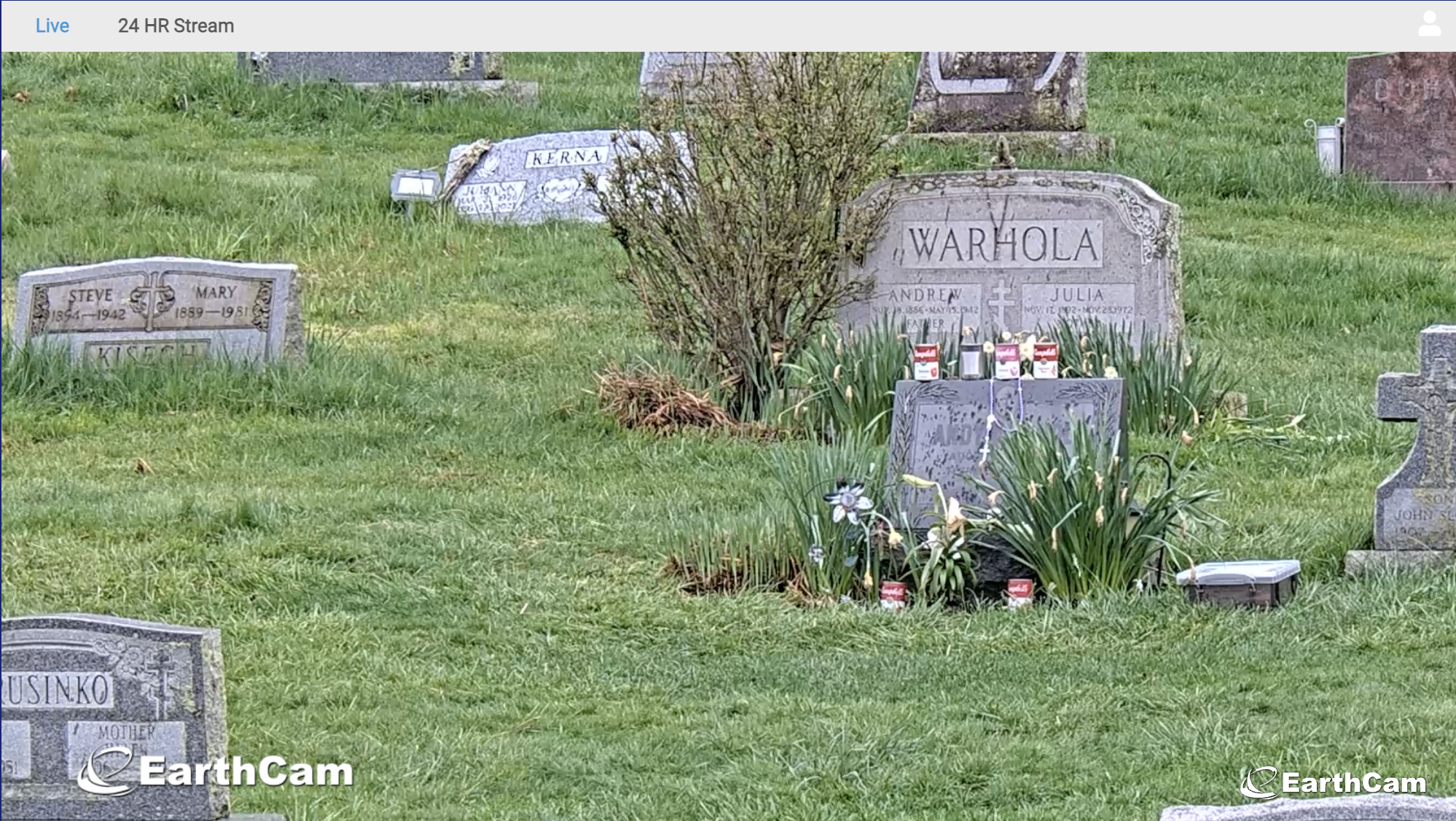Warhol Gravesite
As with physical memorials, digital memorials come in a variety of shapes and sizes. They are formal and informal, carefully curated and completely spontaneous. They are the centuries-old mausoleums in Allegheny Cemetery. There is Andy Warhol’s gravesite in Bethel Park, PA, that is live-streamed 24/7 via Earthcam and the site for Madelyn Roehrig’s ongoing artwork “Conversations with Andy.” There are ghost bikes, which apparently date back to 2003 and are universally recognized sites of loss and reminders of the importance of the cyclists right to safe travel.
In some cases, these sites are imbued with meaning because of their context both physically and within our culture. Others have gained meaning over time. Still others are given meaning through the memories left by others- notes, photos, etc.
Digital memorials, and particularly online memorials, have emerged in the past twenty-something years, and are similarly diverse and dispersed. However, because they are online, they are inherently ephemeral. With physical sites, the degree of ephemerality varies depending on a number of factors, but it is undeniable that, left alone for a while, pieces of paper and granite stones will last quite a while…while online memorials will not.
In our scan, we have also considered other methods of digitally augmenting a physical memorial site. One example of this is the Figment project, also known as the Warhol Cam. A collaboration between the Andy Warhol Museum and EarthCam, Figment livestreams Warhol’s headstone in St. John the Baptist Byzantine Catholic Cemetery. The result is a hybrid physical-digital memorial that enables people around the world to remotely “visit” Warhol’s grave, while simultaneously allowing visitors to the physical site in Pennsylvania to participate in an online, interactive work of art and memorialization. The video feed has been live since 2013, and has been built into museum programming and social media in the years since.
